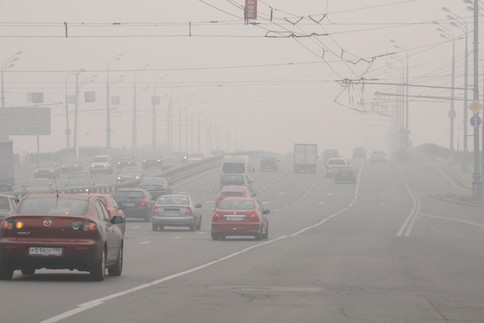Governments often see climate change as too costly to address. In fact, it is too costly to ignore. That is why the World Health Organization (WHO), for example, has linked the prevention of disastrous climate change to “immediate health benefits and health cost savings” from the reduction of air pollution.
The statistics are grim. Air pollution caused more than seven million premature deaths – one in eight globally – in 2012, compared to nearly six million premature deaths from tobacco.
One of the biggest causes of harm are the fine particles called PM2.5, with a diameter of less than 2.5 micrometers. They wreak havoc by traveling deep into the lungs, contributing to inflammation, cancer, and respiratory infection, or by passing into the bloodstream, where they can trigger changes in blood vessels that cause heart attacks and strokes.
The combustion of diesel and coal are among the main causes of air pollution, with 3.7 million deaths attributed to outdoor fumes and 4.3 million resulting from poorly ventilated homes. Motorized transport now accounts for half of premature deaths from ambient particulate matter in the 34 OECD countries. Coal-fired power is also the main source of carbon dioxide, the main greenhouse gas responsible for climate change, which causes about 150,000 premature deaths annually and threatens pervasive risks this century and beyond.
To be sure, the coal industry has helped billions of people escape poverty, not least in China, where coal-fired power has underpinned the nearly 700 per cent growth in per capita income since 1990. But human health is at greater risk in countries that burn more coal. Research for the Global Commission on the Economy and Climate last year calculated that particulate matter alone caused 1.23 million premature deaths in China – the world’s top coal-consuming economy – in 2010.
Estimates for 2012 suggest that 88 per cent of air-pollution-related deaths occur in low- to middle-income countries, representing 82 per cent of the world’s population. The Western Pacific and Southeast Asian regions bear the burden of 1.67 million and 936,000 deaths, respectively.
But pollution is worsening and taking lives in high-income countries as well. For example, PM2.5 reduces life expectancy across the European Union by eight months and, together with ozone, was responsible for 430,000 premature deaths in the EU’s 28 member states in 2011. In Britain, more than six decades after the Great Smog of 1952, PM2.5 pollution levels still persistently exceed WHO guidelines. The health costs of air pollution in the EU are up to €940 billion annually.
“
A formal acknowledgement by governments of the immediate health-related benefits of cutting carbon-dioxide emissions can tip the scales toward greater progress on climate change, air pollution, and human health simultaneously.
The WHO recently carried out a review of the evidence on the health effects of air pollution, and found that the range of such effects is broader and occur at lower concentrations than previously thought. In addition to the well-known effects of air pollution on the lungs and heart, new evidence points to its detrimental impact on children’s development, including in utero. Some studies even link air pollution to diabetes, a major chronic disease and health challenge in Indonesia, China, and Western countries.
Despite the overwhelming evidence of health risks, many countries routinely ignore air-quality standards – as well as the emissions monitoring needed for effective regional cooperation – mainly owing to governments’ fear of their economic impact. Economic models used by advisers to shape development strategy – and touted by lobbyists to influence decisions on major infrastructure projects – exclude the human cost of air pollution and the long-term benefits of measures to reduce it.
Any solutions to the problems posed by air pollution will require not only new economic models, but also integrated measures by local, national, and international governments. Cutting emissions from urban transport, for example, will involve city mayors, local planners, and national policymakers working together to induce compact development.
Fortunately, government support for effective action is growing. Air pollution is at the top of China’s domestic agenda, following the choking smog dubbed “airpocalypse” that engulfed its major cities in January 2013 and Chai Jing’s recent documentary (and social-media phenomenon) “Under the Dome,” which exposed the catastrophic health impacts of air pollution. Indeed, China’s government has closed some of the country’s dirtiest power plants, resulting in a drop in coal consumption last year for the first time since 1998.
A recent draft resolution on air pollution and health for the World Health Assembly (the WHO’s governing body) suggests that countries should “underscore” a link between air pollution and climate change. Countries should adopt the WHO air-quality guidelines and highlight additional opportunities for greener urban planning, cleaner energy, more efficient buildings, and safer walking and cycling.
A formal acknowledgement by governments of the immediate health-related benefits of cutting carbon-dioxide emissions can tip the scales toward greater progress on climate change, air pollution, and human health simultaneously. Policymakers everywhere should recognize the economic opportunities – and the political benefits – that such an outcome promises to deliver.

